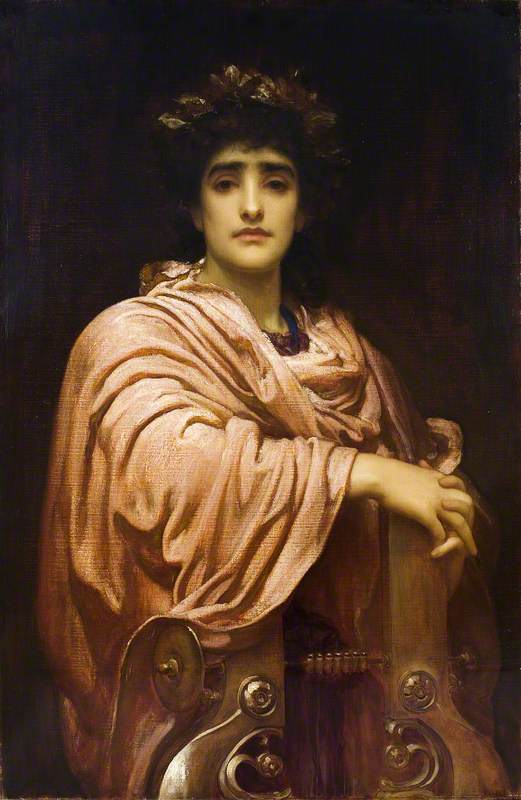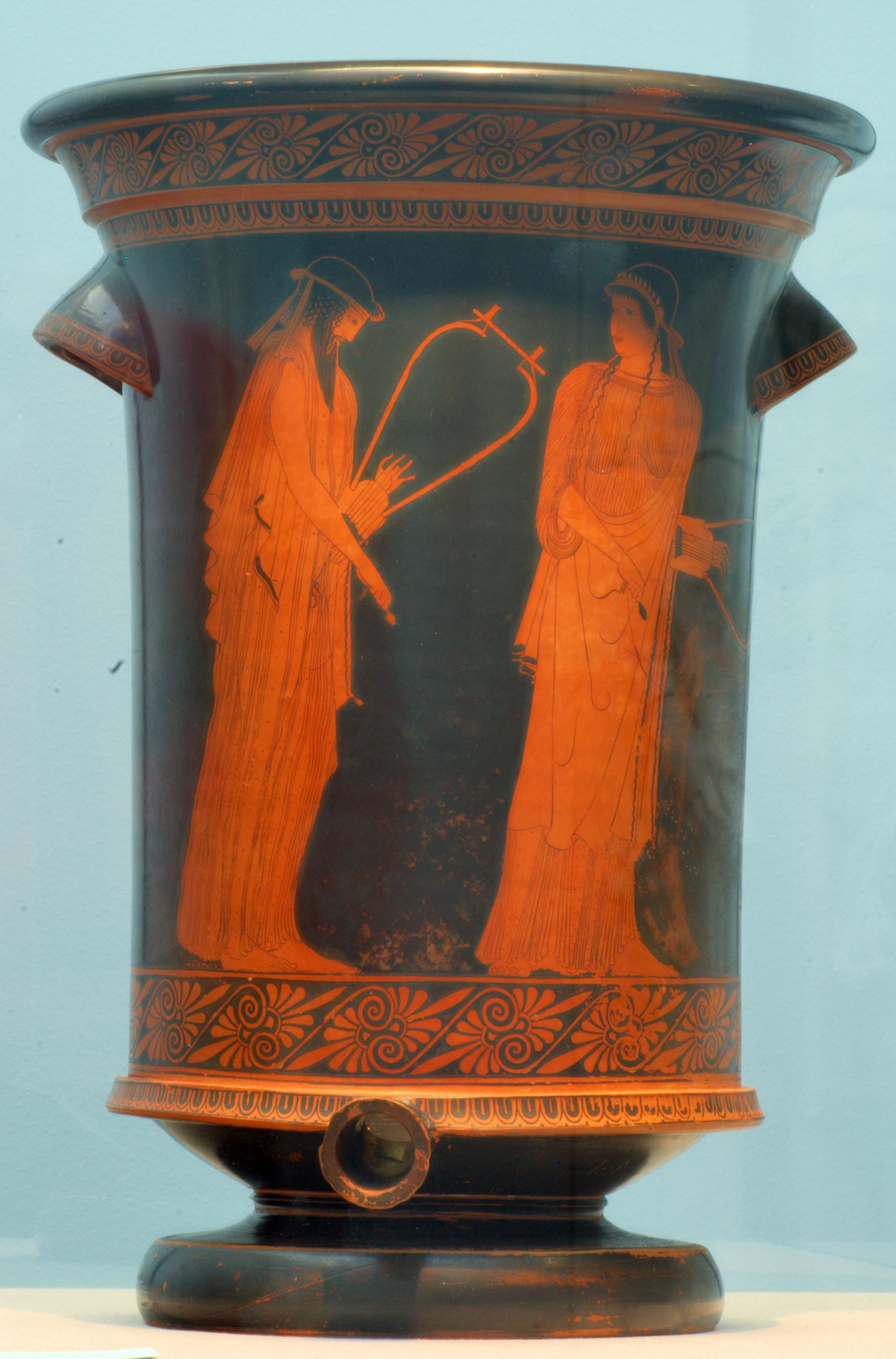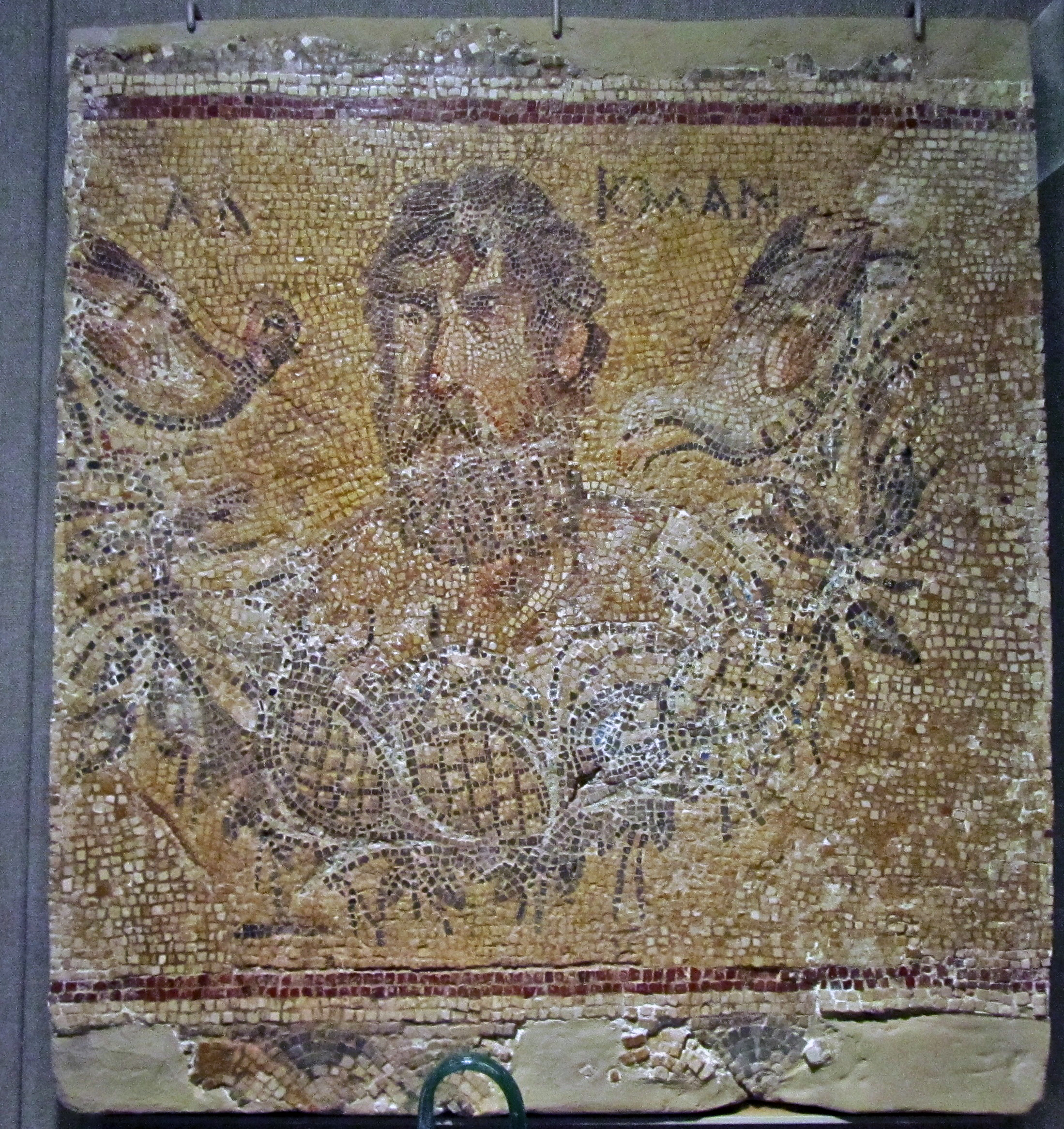|
Corinna
Corinna or Korinna ( grc, Κόριννα, Korinna) was an ancient Greek lyric poet from Tanagra in Boeotia. Although ancient sources portray her as a contemporary of Pindar (born ), not all modern scholars accept the accuracy of this tradition. When she lived has been the subject of much debate since the early twentieth century, proposed dates ranging from the beginning of the fifth century to the late third century BC. Corinna's works survive only in fragments: three substantial sections of poems are preserved on second-century AD papyri from Egypt; several shorter pieces survive in quotations by ancient grammarians. They focus on local Boeotian legends, and are distinctive for their mythological innovations. Corinna's poetry often reworks well-known myths to include details not known from any other sources. Though respected in her hometown, Tanagra, and popular in ancient Rome, modern critics have often regarded her as parochial and dull; her poetry is nonetheless of interes ... [...More Info...] [...Related Items...] OR: [Wikipedia] [Google] [Baidu] |
Myrtis Of Anthedon
Myrtis of Anthedon (6th century BC) was an ancient Greek poet, purported to be the teacher of Pindar of Thebes and Corinna of Tanagra... Scholars believe that she was the earliest in the line of lyric poets who emerged from the district of Boeotia ( Anthedon was a small town in the district of Boeotia, which adjoins Attica to the north-west). All that is known of Myrtis' poetry can be surmised from Plutarch's (himself Boeotian) paraphrase of one of her prose poems (''Greek Questions'' 40). Plutarch cites Myrtis as the source for the story that explained why women were forbidden to set foot in a sacred grove dedicated to a local hero, Eunostos, in the Boeotian town of Tanagra. Evidently Myrtis' poem related how a woman named Ochna, Eunostos' cousin, was rejected by him and, in a fit of anger and in despair over her unrequited love, she told her brothers that Eunostos had raped her, whereupon they killed Eunostus but were then taken captive by his father. Ochna, pitying her brot ... [...More Info...] [...Related Items...] OR: [Wikipedia] [Google] [Baidu] |
Pindar
Pindar (; grc-gre, Πίνδαρος , ; la, Pindarus; ) was an Ancient Greek lyric poet from Thebes. Of the canonical nine lyric poets of ancient Greece, his work is the best preserved. Quintilian wrote, "Of the nine lyric poets, Pindar is by far the greatest, in virtue of his inspired magnificence, the beauty of his thoughts and figures, the rich exuberance of his language and matter, and his rolling flood of eloquence, characteristics which, as Horace rightly held, make him inimitable." His poems can also, however, seem difficult and even peculiar. The Athenian comic playwright Eupolis once remarked that they "are already reduced to silence by the disinclination of the multitude for elegant learning". Some scholars in the modern age also found his poetry perplexing, at least until the 1896 discovery of some poems by his rival Bacchylides; comparisons of their work showed that many of Pindar's idiosyncrasies are typical of archaic genres rather than of only the poet hims ... [...More Info...] [...Related Items...] OR: [Wikipedia] [Google] [Baidu] |
Bacchylides
Bacchylides (; grc-gre, Βακχυλίδης; – ) was a Greek lyric poet. Later Greeks included him in the canonical list of Nine Lyric Poets, which included his uncle Simonides. The elegance and polished style of his lyrics have been noted in Bacchylidean scholarship since at least Longinus. Some scholars have characterized these qualities as superficial charm.Burnettn 1985, p. 3 He has often been compared unfavourably with his contemporary, Pindar, as "a kind of Boccherini to Pindar's Haydn".Slavitt (1998), p. 1 However, the differences in their styles do not allow for easy comparison, and translator Robert Fagles has written that "to blame Bacchylides for not being Pindar is as childish a judgement as to condemn ... Marvell for missing the grandeur of Milton". His career coincided with the ascendency of dramatic styles of poetry, as embodied in the works of Aeschylus or Sophocles, and he is in fact considered one of the last poets of major significance within the more anc ... [...More Info...] [...Related Items...] OR: [Wikipedia] [Google] [Baidu] |
Pausanias (geographer)
Pausanias ( /pɔːˈseɪniəs/; grc-gre, Παυσανίας; c. 110 – c. 180) was a Greek traveler and geographer of the second century AD. He is famous for his ''Description of Greece'' (, ), a lengthy work that describes ancient Greece from his firsthand observations. ''Description of Greece'' provides crucial information for making links between classical literature and modern archaeology. Biography Not much is known about Pausanias apart from what historians can piece together from his own writing. However, it is mostly certain that he was born c. 110 AD into a Greek family and was probably a native of Lydia in Asia Minor. From c. 150 until his death in 180, Pausanias travelled through the mainland of Greece, writing about various monuments, sacred spaces, and significant geographical sites along the way. In writing ''Description of Greece'', Pausanias sought to put together a lasting written account of "all things Greek", or ''panta ta hellenika''. Living in th ... [...More Info...] [...Related Items...] OR: [Wikipedia] [Google] [Baidu] |
Greek Lyric
Greek lyric is the body of lyric poetry written in dialects of Ancient Greek. It is primarily associated with the early 7th to the early 5th centuries BC, sometimes called the "Lyric Age of Greece", but continued to be written into the Hellenistic and Imperial periods. Background Lyric is one of three broad categories of poetry in classical antiquity, along with drama and epic, according to the scheme of the "natural forms of poetry" developed by Goethe in the early nineteenth century. (Drama is considered a form of poetry here because both tragedy and comedy were written in verse in ancient Greece.) Culturally, Greek lyric is the product of the political, social and intellectual milieu of the Greek ''polis'' ("city-state"). Much of Greek lyric is occasional poetry, composed for public or private performance by a soloist or chorus to mark particular occasions. The symposium ("drinking party") was one setting in which lyric poems were performed.Miller, ''Greek Lyric: An Anthology ... [...More Info...] [...Related Items...] OR: [Wikipedia] [Google] [Baidu] |
Denys Page
Sir Denys Lionel Page (11 May 19086 July 1978) was a British classicist and textual critic who served as the 34th Regius Professor of Greek at the University of Cambridge and the 35th Master of Jesus College, Cambridge. He is best known for his critical editions of the Ancient Greek lyric poets and tragedians. Coming from a middle-class family in Reading, Page studied classics at Christ Church, Oxford, and served the college as a lecturer for most of the 1930s. He spent the Second World War working on Ultra intelligence material at the Government Code & Cypher School based at Bletchley Park. In 1950, he was elected Regius Chair of Greek at Cambridge which he held until his retirement in 1973. Initially a fellow of Trinity College, Cambridge, Page was appointed master of the university's Jesus College in 1959. He died of lung cancer in 1978. Having published an edition of the poets Sappho and Alcaeus with fellow Oxford classicist Edgar Lobel, Page went on to write the sta ... [...More Info...] [...Related Items...] OR: [Wikipedia] [Google] [Baidu] |
Silanion
Silanion ( grc-gre, Σιλανίων, ''gen.'' Σιλανίωνος) was the best-known of the Greek portrait-sculptors working during the fourth century BC. Pliny gives his ''floruit'' as the 113th Olympiad, that is, around 328–325 BCE (''Naturalis Historia'', 34.51), and records he had no famous teacher. His idealized portrait head of Plato was commissioned by Mithridates of Persia for the Academy of Athens, ''c.'' 370 BC. Later copies of it and of an idealized portrait head of Sappho survive. Both are of simple ideal type, the Sappho not strictly a portrait, since Sappho (sixth century BC) lived before the age of portraiture. The best copy of the Plato is in the Glyptothek of Munich (''illustration''). Silanion also produced a "portrait" of the poet Corinna. Other "portrait" heads by Silanion evoked mythic and legendary heroes. An Achilles mentioned by Pliny was later adapted to represent Ares,S. Lattimore, "Ares and the Heads of Heroes", ''American Journal of Archaeology' ... [...More Info...] [...Related Items...] OR: [Wikipedia] [Google] [Baidu] |
Ancient Greek Dialects
Ancient Greek in classical antiquity, before the development of the common Koine Greek of the Hellenistic period, was divided into several varieties. Most of these varieties are known only from inscriptions, but a few of them, principally Aeolic, Doric, and Ionic, are also represented in the literary canon alongside the dominant Attic form of literary Greek. Likewise, Modern Greek is divided into several dialects, most derived from Koine Greek. Provenance * The earliest known Greek dialect is Mycenaean Greek, the South/Eastern Greek variety attested from the Linear B tablets produced by the Mycenaean civilization of the Late Bronze Age in the late 2nd millennium BC. The classical distribution of dialects was brought about by the migrations of the early Iron Age after the collapse of the Mycenaean civilization. Some speakers of Mycenaean were displaced to Cyprus while others remained inland in Arcadia, giving rise to the Arcadocypriot dialect. This is the only dialect ... [...More Info...] [...Related Items...] OR: [Wikipedia] [Google] [Baidu] |
Boeotia
Boeotia ( ), sometimes Latinisation of names, Latinized as Boiotia or Beotia ( el, wikt:Βοιωτία, Βοιωτία; modern Greek, modern: ; ancient Greek, ancient: ), formerly known as Cadmeis, is one of the regional units of Greece. It is part of the modern regions of Greece, region of Central Greece (region), Central Greece. Its capital is Livadeia, and its largest city is Thebes, Greece, Thebes. Boeotia was also a region of ancient Greece, from before the 6th century BC. Geography Boeotia lies to the north of the eastern part of the Gulf of Corinth. It also has a short coastline on the Gulf of Euboea. It bordered on Megaris (now West Attica) in the south, Attica in the southeast, Euboea in the northeast, Opuntian Locris (now part of Phthiotis) in the north and Phocis in the west. The main mountain ranges of Boeotia are Mount Parnassus in the west, Mount Helicon in the southwest, Cithaeron in the south and Parnitha in the east. Its longest river, the Cephissus (Boeotia), ... [...More Info...] [...Related Items...] OR: [Wikipedia] [Google] [Baidu] |
Tanagra
Tanagra ( el, Τανάγρα) is a town and a municipality north of Athens in Boeotia, Greece. The seat of the municipality is the town Schimatari. It is not far from Thebes, and it was noted in antiquity for the figurines named after it. The Tanagra figurines were a mass-produced, mold-cast and fired type of Greek terracotta figurines produced from the later fourth century BC, primarily in Tanagra. Government The municipality Tanagra was formed at the 2011 local government reform by the merger of the following 4 former municipalities, that became municipal units: * Dervenochoria * Oinofyta * Schimatari *Tanagra History Ancient Anciently, Tanagra ( grc, Τάναγρα), sometimes written Tanagraea, was a town of ancient Boeotia, situated upon the left bank of the Asopus, in a fertile plain, at the distance of 130 stadia from Oropus and 200 from Plataeae. Several ancient writers identified Tanagra with the Homeric Graea; but others supposed them to be distinct places, and ... [...More Info...] [...Related Items...] OR: [Wikipedia] [Google] [Baidu] |
Alcman
Alcman (; grc-gre, Ἀλκμάν ''Alkmán''; fl. 7th century BC) was an Ancient Greek choral lyric poet from Sparta. He is the earliest representative of the Alexandrian canon of the Nine Lyric Poets. Biography Alcman's dates are uncertain, but he was probably active in the late seventh century BC. The name of his mother is not known; his father may have been called either Damas or Titarus. Alcman's nationality was disputed even in antiquity. Unfortunately, the records of the ancient authors were often deduced from biographic readings of their poetry, and the details are often untrustworthy. Antipater of Thessalonica wrote that poets have "many mothers" and that the continents of Europe and Asia both claimed Alcman as their son. Frequently assumed to have been born in Sardis, capital of ancient Lydia, the Suda claims that Alcman was actually a Laconian from Messoa. The compositeness of his dialect may have helped to maintain the uncertainty of his origins, b ... [...More Info...] [...Related Items...] OR: [Wikipedia] [Google] [Baidu] |
Tatian
Tatian of Adiabene, or Tatian the Syrian or Tatian the Assyrian, (; la, Tatianus; grc, Τατιανός; syc, ܛܛܝܢܘܣ; c. 120 – c. 180 AD) was an Assyrian Christian writer and theologian of the 2nd century. Tatian's most influential work is the Diatessaron, a Biblical paraphrase, or "harmony", of the four gospels that became the standard text of the four gospels in the Syriac-speaking churches until the 5th-century, after which it gave way to the four separate gospels in the Peshitta version. Life Concerning the date and place of his birth, little is known beyond what Tatian tells about himself in his ''Oratio ad Graecos'', chap. xlii ('' Ante-Nicene Fathers'', ii. 81–82): that he was born in "the land of the Assyrians", scholarly consensus is that he died c. AD 185, perhaps in Adiabene. He travelled to Rome, where he first encountered Christianity. During his prolonged stay in Rome, according to his own representation, his abhorrence of the pagan cults sparked d ... [...More Info...] [...Related Items...] OR: [Wikipedia] [Google] [Baidu] |







